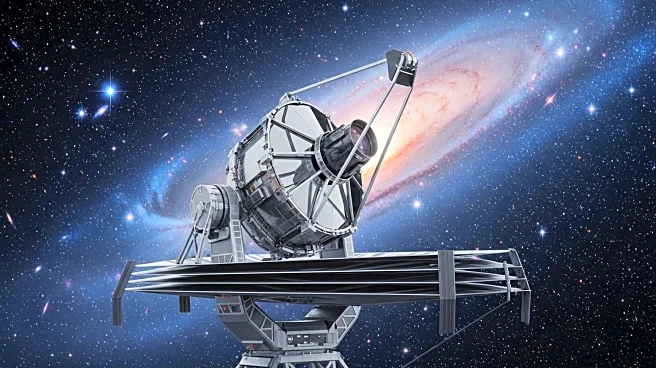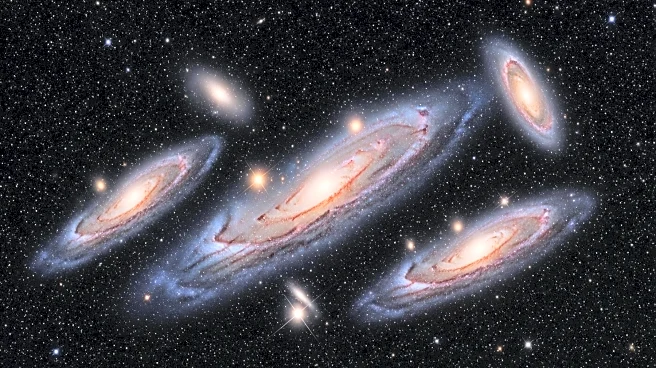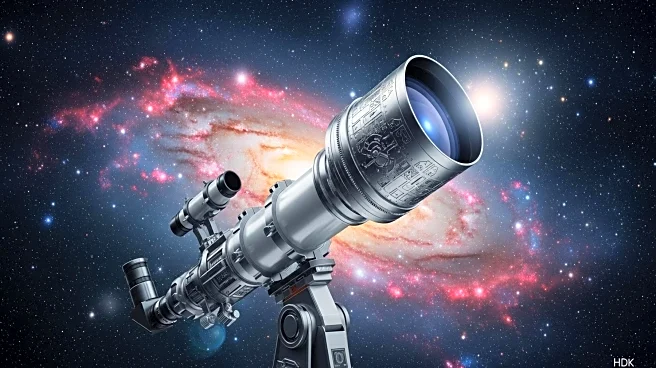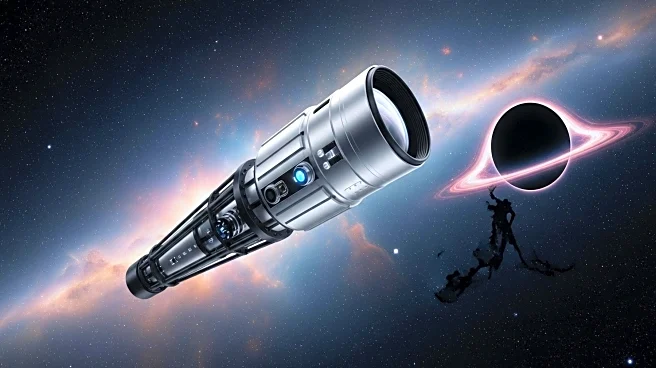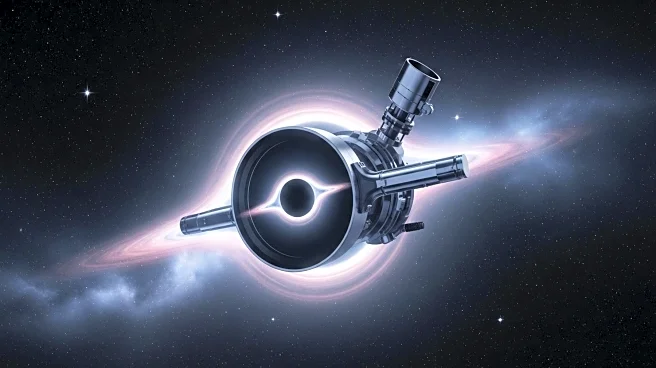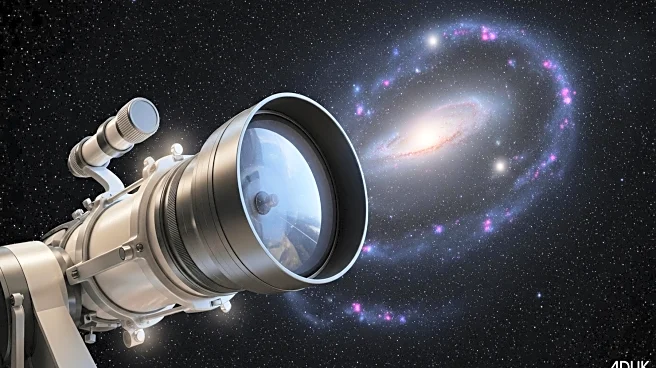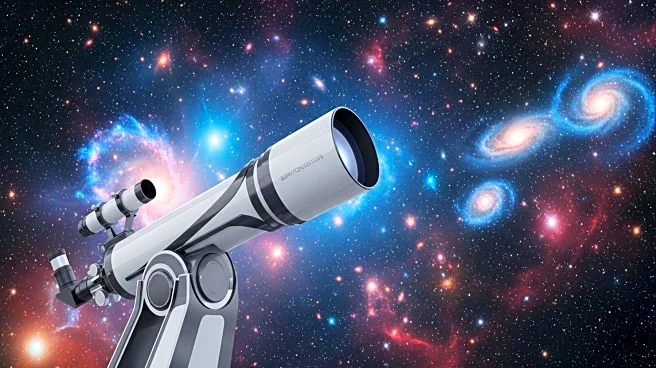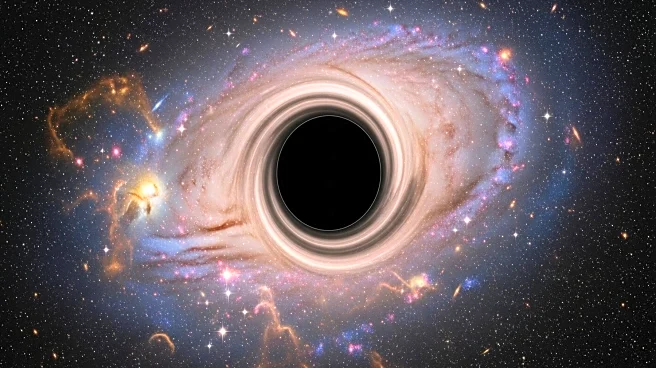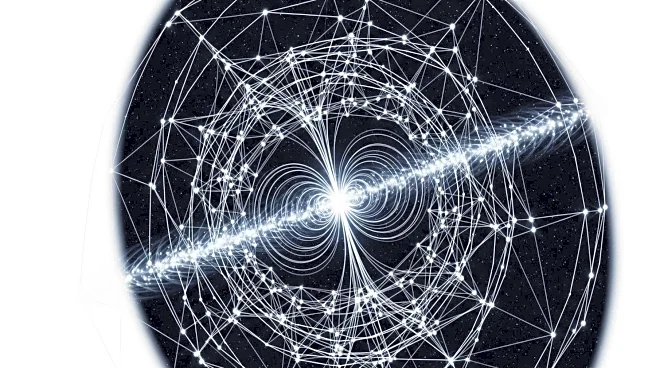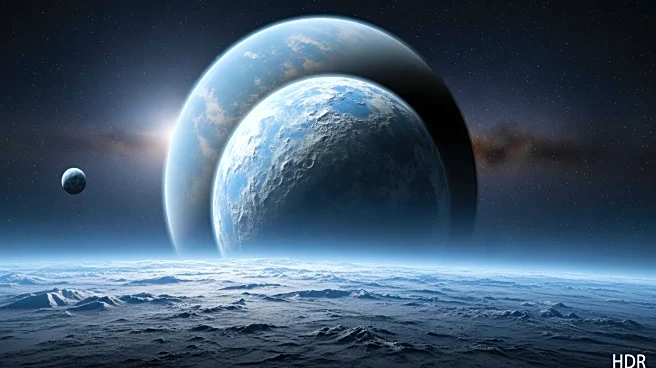What's Happening?
The James Webb Space Telescope (JWST) has potentially identified a primordial black hole in the early universe, marking a significant discovery in astrophysics. Led by astrophysicist Ignas Juodžbalis, the team measured the mass of a 'Little Red Dot' (LRD) named QSO1, suggesting it is a black hole with a mass equivalent to 50 million Suns. This discovery could provide evidence of primordial black holes formed shortly after the Big Bang. The findings challenge existing theories about the formation of galaxies, suggesting that black holes may have preceded galaxy formation.
Why It's Important?
This discovery could reshape our understanding of the early universe and the formation of cosmic structures. Primordial black holes are theorized to have formed in the first moments after the Big Bang, and their existence could offer insights into the universe's evolution. If validated, this finding could influence theories on galaxy formation, suggesting that black holes played a foundational role. The research underscores the capabilities of JWST in exploring the universe's origins and could lead to new models of cosmic evolution.
What's Next?
The research remains to be peer-reviewed, and further validation is required to confirm the existence of primordial black holes. Scientists will continue to analyze data from JWST and other telescopes to explore the implications of this discovery. Future studies may focus on understanding the role of black holes in galaxy formation and the broader dynamics of the early universe. Continued observations and theoretical modeling will be crucial in advancing our knowledge of cosmic history.
